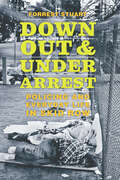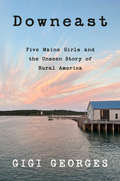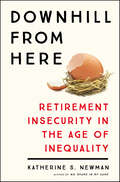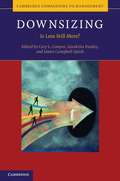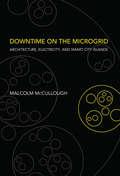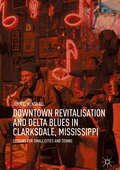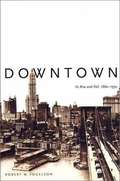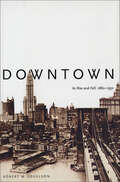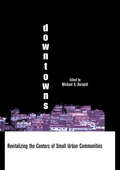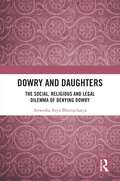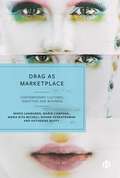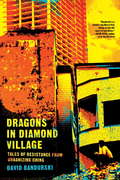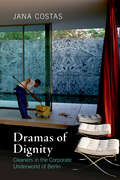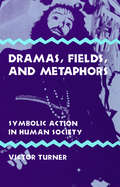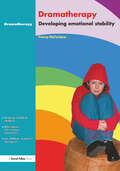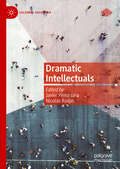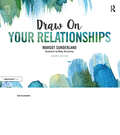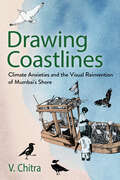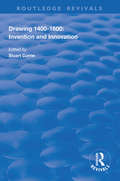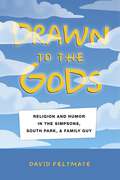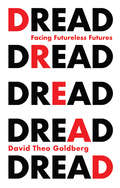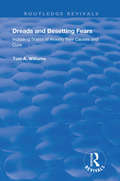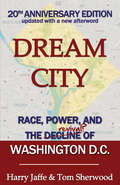- Table View
- List View
Down, Out, and Under Arrest: Policing and Everyday Life in Skid Row
by Forrest StuartIn his first year working in Los Angeles's Skid Row, Forrest Stuart was stopped on the street by police fourteen times. Usually for doing little more than standing there. Juliette, a woman he met during that time, has been stopped by police well over one hundred times, arrested upward of sixty times, and has given up more than a year of her life serving week-long jail sentences. Her most common crime? Simply sitting on the sidewalk--an arrestable offense in LA. Why? What purpose did those arrests serve, for society or for Juliette? How did we reach a point where we've cut support for our poorest citizens, yet are spending ever more on policing and prisons? That's the complicated, maddening story that Stuart tells in Down, Out and Under Arrest, a close-up look at the hows and whys of policing poverty in the contemporary United States. What emerges from Stuart's years of fieldwork--not only with Skid Row residents, but with the police charged with managing them--is a tragedy built on mistakes and misplaced priorities more than on heroes and villains. He reveals a situation where a lot of people on both sides of this issue are genuinely trying to do the right thing, yet often come up short. Sometimes, in ways that do serious harm. At a time when distrust between police and the residents of disadvantaged neighborhoods has never been higher, Stuart's book helps us see where we've gone wrong, and what steps we could take to begin to change the lives of our poorest citizens--and ultimately our society itself--for the better.
Downeast: Five Maine Girls and the Unseen Story of Rural America
by Gigi GeorgesA touching four-year chronicle of five girls coming of age in impoverished rural Maine and learning to forge their own paths through life’s struggles.“Remarkably poignant and timely . . . should be read by anyone who cares to understand rural America’s human tragedies and heroic triumphs.” —John J. Dilulio, Jr.Nestled in Maine’s far northeast corner, Washington County sits an hour’s drive from the heart of famed and bustling Acadia National Park. Yet it’s a world away. For Willow, Vivian, McKenna, Audrey, and Josie—five teenage girls caught between tradition and transformation in this remote region—it’s home. Based on four years of intimate reporting, Downeast follows their journeys of heartbreak and hope in uncertain times, creating a nuanced and unique portrait of small-town life with women at its center. It crafts a powerful and optimistic counternarrative to the dominant downbeat stories about rural America as a place of hopelessness and despair.All five girls know the pain and joy of life in a region whose rugged beauty and stoicism mask dwindling populations, vanishing job opportunities, and pervasive opioid addiction. As the girls reach adulthood, they discover that despite significant challenges, there is much to celebrate in “the valley of the overlooked.”Their stories remind us of the value of timeless ideals: strength of family and community, resilience in the face of hurdles, reverence for nature’s rule, dignity in cracked hands and muddied shoes, and the enduring power of home.“A remarkable book. . . . Downeast is important, arresting, and engrossing.” —Christina Baker Kline, #1 New York Times–bestselling author“It’s almost impossible not to care about these fierce young women and cheer for their hard-won successes.” —Kirkus Reviews“Well-researched and compelling . . . a celebration of hard work rewarded and family connections cherished. It is not in any way saccharine, but it is a welcome dose of positivity in a troubled time.” —Portland Press Herald
Downeast: Five Maine Girls and the Unseen Story of Rural America
by Gigi GeorgesBased on four years of reporting, “a heartfelt portrait of five teenage girls growing up in Maine’s remote and economically depressed Washington County” (Publishers Weekly).Downeast follows five girls as they come of age in one of the most challenging and geographically isolated regions on the Eastern seaboard. Nestled in Maine’s far northeast corner, Washington County sits an hour’s drive from the famed Acadia National Park. Yet it’s a world away. For Willow, Vivian, Mckenna, Audrey, and Josie—five teenagers caught between tradition and transformation in this remote region—it is home. Gigi Georges traces their journeys of heartbreak and hope in uncertain times, creating a nuanced portrait of rural America with women at its center.Willow lives in the shadow of an abusive, drug-addicted father and searches for stability through photography and love. Vivian, a gifted writer, feels stifled by her church and town, and struggles to break free without severing family ties. Mckenna is a softball pitching phenom whose passion is the lobster-fishing she learned at her father’s knee. Audrey is a beloved basketball star who earns a coveted college scholarship but questions her chosen path. Josie, a Yale-bound valedictorian, is determined to take the world by storm. All five know the pain and joy of life in a region whose rugged beauty and stoicism mask dwindling populations, vanishing job opportunities, and pervasive opioid addiction. As the girls reach adulthood, they discover that despite significant challenges, there is much to celebrate in “the valley of the overlooked.” Their stories remind us of the value of timeless ideals: strength of family and community, reverence for nature’s rule, dignity in cracked hands and muddied shoes, and the enduring power of home.“[A] remarkable book . . . important, arresting, and engrossing.”—Christina Baker Kline, #1 New York Times–bestselling author of Orphan Train
Downhill from Here: Retirement Insecurity in the Age of Inequality
by Katherine S. NewmanA sharp examination of the looming financial catastrophe of retirement in America.As millions of Baby Boomers reach their golden years, the state of retirement in America is little short of a disaster. Nearly half the households with people aged 55 and older have no retirement savings at all. The real estate crash wiped out much of the home equity that millions were counting on to support their retirement. And the typical Social Security check covers less than 40% of pre-retirement wages—a number projected to drop to under 28% within two decades. Old-age poverty, a problem we thought was solved by the New Deal, is poised for a resurgence.With dramatic statistics and vivid portraits, acclaimed sociologist Katherine S. Newman shows that the American retirement crisis touches us all, cutting across class lines and generational divides. White-collar managers have seen retirement benefits vanish; Teamsters have had their pensions cut in half; bankrupt cities like Detroit have walked away from their commitments to municipal workers. And for Generation X, the prospects are even worse: a fifth of them expect to never be able to retire. Only the vaunted “one percent” can face retirement without fear.Other countries are confronting similar demographic challenges, yet they have not abandoned their social contract with seniors. Downhill From Here makes it clear that America, too, can—and must—do better.
Downshifting: How to Work Less and Enjoy Life More
by John DrakeToday's organizations put extraordinary pressure on their employees to work harder and longer. Downshifting: How to Work Less and Enjoy Life More shows readers how to resist this pressure and actually spend less time in the office.
Downsizing
by Cary L. Cooper Alankrita Pandey James Campbell QuickDownsizing is one of the most frequently used business strategies for reducing costs, returning firms to profit or for restructuring businesses following takeovers, mergers and acquisitions. Downsizing measures are also set to become much more prevalent in the public sector as governments seek to restrict levels of public spending. This book is one of the first to provide a thorough study of downsizing from a global perspective. It examines the phenomenon in its entirety, exploring how it is initiated and what the process of downsizing looks like. It also looks at the effects of downsizing at a number of different levels, from the individual (e. g. , motivational effects, effects on health and stress levels) to the organizational (e. g. , financial outcomes, reputational and productivity outcomes). Written by an international team of experts, the book provides a comprehensive overview of downsizing that examines both the strategic and human implications of this process.
Downtime on the Microgrid: Architecture, Electricity, and Smart City Islands (Infrastructures)
by Malcolm McCulloughSomething good about the smart city: a human-centered account of why the future of electricity is local.Resilience now matters most, and most resilience is local—even for that most universal, foundational modern resource: the electric power grid. Today that technological marvel is changing more rapidly than it has for a lifetime, and in our new grid awareness, community microgrids have become a fascinating catalyst for cultural value change. In Downtime on the Microgrid, Malcolm McCullough offers a thoughtful counterpoint to the cascade of white papers on smart clean infrastructure. Writing from an experiential perspective, McCullough avoids the usual smart city futurism, technological solutionism, policy acronyms, green idealism, critical theory jargon, and doomsday prepping to provide new cultural context for a subject long a favorite theme in science and technology studies. McCullough describes the three eras of North American electrification: innovation, consolidation, and decentralization. He considers the microgrid boom and its relevance to the built environment as “architecture's grid edge.” Finally, he argues that resilience arises from clusters; although a microgrid is often described as an island, future resilience will require archipelagos—clusters of microgrids, with a two-way, intermittent connectiveness that is very different from the always-on, top-down technofuture we may be expecting. With Downtime on the Microgrid, McCullough rises above techno-hype to find something good about the smart city and reassuring about local resilience.
Downtown Revitalisation and Delta Blues in Clarksdale, Mississippi: Lessons for Small Cities and Towns
by John C. HenshallThis book is about Clarksdale, a small town in Mississippi, USA, and how the local community has revitalised the long-dilapidated downtown, with the renewal based on the town’s intimate association with Blues music and the culture that flows through the Mississippi Delta. John Henshall highlights underlying trends in downtown decline and revitalisation in cities and towns in America, together with commentary of his own experience at home in Australia.In Clarksdale, downtown economic revitalisation gained momentum in the mid-2000s as local residents and newcomers focused their entrepreneurial and creative efforts on promoting Clarksdale’s heritage, which is steeped in Blues music and Delta culture. While much attention to date has been given to large cities – from Sydney to San Francisco and from London to New York – as ‘creative cities’, little has been written about creativity in small cities and towns. This book delves into the positive role played by creative individuals in the economic revitalisation of downtown Clarksdale. The role of urban planning and community interaction is examined, and key lessons are provided for other small cities and towns, as they seek out opportunities to revitalise their downtowns and town centres.
Downtown: Its Rise and Fall, 1880-1950
by Robert M. FogelsonDowntown is the first history of what was once viewed as the heart of the American city. Urban historian Robert Fogelson gives a riveting account of how downtown--and the way Americans thought about it--changed between 1880 and 1950. Recreating battles over subways and skyscrapers, the introduction of elevated highways and parking bans, and other controversies, this book provides a new and often starling perspective on downtown's rise and fall.
Downtown: Its Rise and Fall, 1880–1950
by Robert M. FogelsonWinner of a Lewis Mumford Prize: “Extremely engaging reading for those interested in the history of cities and urban experience.” —Booklist Written by one of this country’s foremost urban historians, Downtown is the first history of what was once viewed as the heart of the American city. It tells the fascinating story of how downtown—and the way Americans thought about downtown—changed over time. By showing how businessmen and property owners worked to promote the well-being of downtown, even at the expense of other parts of the city, it also gives a riveting account of spatial politics in urban America.Drawing on a wide array of contemporary sources, Robert M. Fogelson brings downtown to life, first as the business district, then as the central business district, and finally as just another business district. His book vividly recreates the long-forgotten battles over subways and skyscrapers in the late nineteenth and early twentieth centuries. And it provides a fresh, often startling perspective on elevated highways, parking bans, urban redevelopment, and other controversial issues. This groundbreaking book will be a revelation to scholars, city planners, policymakers, and anyone interested in American cities and American history.“A thorough and accomplished history.” —The Washington Post Book World"Superlative . . . a vital contribution to the study of American life.” —Publishers Weekly“A superbly thorough analysis of the causes of inner-city blight, congestion, and economic decline in mid-20th century urban America.” —Library JournalIncludes photographs
Downtowns: Revitalizing the Centers of Small Urban Communities (Contemporary Urban Affairs)
by Michael A. BurayidiThis collection evaluates the various strategies that different cities have used when attempting to economically revitalize downtown areas.
Dowry and Daughters: The Social, Religious and Legal Dilemma of Denying Dowry
by Anwesha Arya-BhattacharyaThis book studies the relevance of dowry as a customary practice in Indian marriages. It examines the historical articulation between traditional cultural texts and modern statutory law to understand how daughters are valued, and how dowry as a custom defines this value. The author creates a conceptual link between modern, medieval, and ancient marriage rites that formulate and embed dowry behaviour and practice within Indian society. The book also provides a critique of the cultural textual tradition of India and South Asia. It asserts for the first time, that Vedic materialism is at the core of an adequate understanding of how dowry as wealth comes to occupy such a central position in the field of marriage. An important study into the custom and tradition of South Asia, this book will be indispensable for students and researchers of cultural studies, women&’s studies, gender studies, religion, history, law, and South Asian studies.
Drag as Marketplace: Contemporary Cultures, Identities and Business
by Mikko Laamanen, Mario Campana, Maria Rita Micheli, Rohan Venkatraman and Katherine DuffyToday drag has an unprecedented mass cultural appeal. Reaching far beyond traditional queer venues and audiences into the mainstream, it has evolved into a booming industry worth millions of dollars. Drag is art, politics, lifestyle and entertainment all in one. Yet, studies examining its market value as a product, brand or consumption practice remain scarce. This interdisciplinary collection fills that void, exploring the intersection of drag and markets. Written by an international group of scholars exploring cases from Europe, Asia and the US, this will be a key resource for anyone curious about drag’s social, political and economic impact.
Dragons in Diamond Village: Tales of Resistance from Urbanizing China
by David Bandurski"David Bandurski is a modern-day Marco Polo taking us into the heart of new China." --Kevin Sites, author of In the Hot ZoneChina's explosive modernization has led to a unique phenomenon: voraciously-growing cities absorbing formerly distant villages that become tenement communities. Dragons in Diamond Village is about the plight--and the courage--of the village-dwellers caught in this tide of urbanization: Huang Minpeng, a semi-literate farmer turned self-taught rights defender; He Jieling, a suburban housewife who just wanted to open a hair salon; and villagers like Lu Zhaohui who refuse to give up the land their families have cultivated for generations. It is, in short, a stirring tale -- a community of unlikely activists, they are fighting for identity, justice, and their rightful place in China's new cities. Behind them stand millions of others who exist in the strange limbo of the urban village. Because their villages stand on invaluable tracts of land--vulnerable to the machinations of corrupt local officials--their homes have become a battleground in the war over China's urban future.From the Hardcover edition.
Dramas of Dignity: Cleaners in the Corporate Underworld of Berlin
by Jana CostasLooking beyond the shiny surface of Potsdamer Platz, a designer micro-city within Berlin's city center, this book goes behind-the-scenes with the cleaners who pick up cigarette butts from sidewalks, scrape chewing gum from marble floors, wipe coffee stains from office desks and scrub public toilets, long before white-collar workers, consumers and tourists enter the complex. It follows Costas's journey to a large yet hidden, four-level deep corporate underworld below Potsdamer Platz. There, Costas discovers how cleaners' attitudes to work are much less straightforward than the public perceptions of cleaning as degrading work would suggest. Cleaners turn to their work for dignity yet find it elusive. The book explores how these cleaners' dramas of dignity unfold in interactions with co-workers, management, clients and the public. The book will appeal to students and academics in the fields of organisational theory, organisational behavior, organisation studies, sociology, social anthropology, cultural studies and urban studies.
Dramas, Fields, and Metaphors: Symbolic Action in Human Society (Symbol, Myth and Ritual)
by Victor TurnerIn this book, Victor Turner is concerned with various kinds of social actions and how they relate to, and come to acquire meaning through, metaphors and paradigms in their actors' minds; how in certain circumstances new forms, new metaphors, new paradigms are generated. To describe and clarify these processes, he ranges widely in history and geography: from ancient society through the medieval period to modern revolutions, and over India, Africa, Europe, China, and Meso-America.Two chapters, which illustrate religious paradigms and political action, explore in detail the confrontation between Henry II and Thomas Becket and between Hidalgo, the Mexican liberator, and his former friends. Other essays deal with long-term religious processes, such as the Christian pilgrimage in Europe and the emergence of anti-caste movements in India. Finally, he directs his attention to other social phenomena such as transitional and marginal groups, hippies, and dissident religious sects, showing that in the very process of dying they give rise to new forms of social structure or revitalized versions of the old order.
Dramatherapy: Raising Children's Self-Esteem and Developing Emotional Stability
by Penny McFarlaneProviding a new and proven way forward for practitioners who want to help children, but who do not have recourse to a qualified therapist, this book covers: tried and tested practical activities to use with children simple explanations of how and why dramatherapy works informative case studies that show activities being used in practice a useful list of further reading, centres for training and qualifications.
Dramatic Intellectuals (Cultural Sociology)
by Javier Pérez-Jara Nicolás RudasThis edited volume advances meaning-centered approaches to understanding the social construction of public intellectuals and their enduring influence on contemporary societies. The contributors reject reductionist perspectives that depict intellectuals and their ideas as mere byproducts of broader social forces. Instead, the volume champions a multidimensional approach that recognizes the semi-autonomy and causal power of intellectual discourses. At the core of this framework is the concept of dramatic intellectuals—figures who navigate collective anxieties and hopes, shaping public discourse through master narratives of salvation and catastrophe, utopia and apocalypse. Through diverse case studies, the volume identifies key features of their master stories, including stark binaries, the social construction of meta-adversaries and meta-saviors, the mobilization of cultural traumas and ideological packs, and the Cassandra complex. Each chapter examines at least one pivotal dramatic intellectual within her cultural context, exploring how these figures shape public discourse and collective imagination. The volume covers a diverse range of intellectuals, including Karl Marx, Sigmund Freud, Carl Jung, Frantz Fanon, Jean-Paul Sartre, Bertrand Russell, Noam Chomsky, Arne Naess, Ingemar Hedenius, Ayn Rand, Otis Eugene &“Gene&” Ray, Pedro Almodóvar, Agustín Laje, Slavoj Žižek, Jordan Peterson, and Giorgio Agamben. Beyond detailed case studies, the book lays the groundwork for new research agendas in the sociology of intellectuals. This book will be essential reading for scholars of cultural sociology.
Draw on Your Relationships: Creative Ways to Explore, Understand and Work Through Important Relationship Issues (Draw On)
by Margot Sunderland Nicky ArmstrongDraw on Your Relationships is a bestselling resource to help people of all ages express, communicate and deal more effectively with their emotions through drawing. Built around five key themes, each section contains a simple picture exercise with clear objectives, instructions and suggestions for development. The picture activities have been carefully designed to help ease the process of both talking about feelings and exploring life choices, by trying out alternatives safely on paper. This will help to create clarity and new perspectives as a step towards positive action. Offering a broad range of exercises which can be adapted for any ability or age from middle childhood onwards, this unique book explores a range of emotions surrounding a person’s important life experiences, key memories, relationships, best times, worst times and who they are as a person. This is an essential resource for therapists, educators, counsellors and anyone who engages other people in conversations that matter about their relationship to self, others and life in general. This revised and updated second edition also contains a new section on how to use the superbly emotive The Relationship Cards (ISBN 9781138071018) to facilitate deeper therapeutic conversations.
Drawing Coastlines: Climate Anxieties and the Visual Reinvention of Mumbai's Shore (Expertise: Cultures and Technologies of Knowledge)
by V. ChitraDrawing Coastlines reveals the ways that technical images such as weather infographics, sea-level projections, and surveys are fast remaking Mumbai's coasts and coastal futures. They set in place infrastructural interventions, vocabularies of development and conservation, and their lines and dots inscribe material conditions of existence and horizons of loss that entangle life forms. V. Chitra interlaces graphics and text by redrawing scientific images, the moments of their construction, the choices and consequences of what gets drawn and what does not, and how images are seen, performed, and manifest. These visual reconstructions show how images remake human-nonhuman relationships, arrange urban politics, and materialize landscapes in complex and contradictory ways. The multimodal format of Drawing Coastlines engages in the politics of its context where words and images combine to create coastal worlds, and to find, through a creative anthropology, openings to build new forms of care in the midst of crisis.
Drawing, 1400-1600: Invention and Innovation (Routledge Revivals)
by Stuart CurrieFirst published in 1998, this volume twelve scholars explore ways in which drawings were employed and appreciated in various European Cities form late medieval times, through the Renaissance and Reformation periods and into the early seventeenth century. The essayists examine the relationship between preparatory sketches and finished artworks in more durable and expensive materials, and consider the roles played by various drawing types, such as studies from different kinds of model and student copies from a master’s exemplar. They also investigate how drawings and their mechanically- reproduced equivalents- engravings, etchings and other forms of print – came to be collected for both practical and connoisseurial purposes, and how iconographical and stylistic inventiveness were linked to imaginative artistic interpretations of traditional subjects and to technical innovations in drawing and printmaking. Through diverse approaches to the study of artists’ attitudes and ambitions, the essays in Drawing 1400-1600 offer ways of appreciating the complex and fascinating history of the practice and theory of drawing over two centuries during which the expressive potential of the medium was realized in some of the greatest artistic statements of all time.
Drawn to the Gods: Religion and Humor in The Simpsons, South Park, and Family Guy
by David FeltmateA new world of religious satire illuminated through the layers of religion and humor that make up the The Simpsons, South Park and Family Guy.Drawing on the worldviews put forth by three wildly popular animated shows – The Simpsons, South Park, and Family Guy– David Feltmate demonstrates how ideas about religion’s proper place in American society are communicated through comedy. The book includes discussion of a wide range of American religions, including Protestant and Catholic Christianity, Judaism, Islam, Buddhism, Native American Religions, New Religious Movements, “Spirituality,” Hinduism, and Atheism. Along the way, readers are shown that jokes about religion are influential tools for teaching viewers how to interpret and judge religious people and institutions. Feltmate, develops a picture of how each show understands and communicates what constitutes good religious practice as well as which traditions they seek to exclude on the basis of race and ethnicity, stupidity, or danger. From Homer Simpson’s spiritual journey during a chili-pepper induced hallucination to South Park’s boxing match between Jesus and Satan to Peter Griffin’s worship of the Fonz, each show uses humor to convey a broader commentary about the role of religion in public life. Through this examination, an understanding of what it means to each program to be a good religious American becomes clear. Drawn to the Gods is a book that both fans and scholars will enjoy as they expose the significance of religious satire in these iconic television programs.
Dread: Facing Futureless Futures
by David Theo GoldbergA pervasive sense has taken hold that any and all of us are under suspicion and surveillance, walking on a tightrope, a step away from erasure of rights or security. Nothing new for many long-targeted populations, it is now surfacing as a broad social sensibility, ramped up by environmental crisis and pandemic wreckage. We have come to live in proliferating dread, even of dread itself. In this brilliant analysis of the nature, origins, and implications of this gnawing feeling, David Theo Goldberg exposes tracking-capitalism as the operating system at the root of dread. In contrast to surveillance, which requires labor-intensive analysis of people's actions and communications, tracking strips back to the fundamental mapping of our movements, networks, and all traces of our digitally mediated lives. A simultaneous tearing of the social fabric – festering culture wars, the erosion of truth, even "civil war" itself – frays the seams of the sociality and solidarity needed to thwart this transformation of people into harvestable, expendable data. This searing commentary offers a critical apparatus for interrogating the politics of our time, arguing that we need not just a politics of refusal and resistance, but a creative politics to counter the social life of dread.
Dreads and Besetting Fears: Including States of Anxiety their Causes and Cure (Routledge Revivals)
by Tom A. WilliamsFirst published in 1925, this forward-thinking volume examined states of anxiety, their causes and their possible cures. Based on physicians’ reports of their patients, the author aimed to expand beyond purely obsessive dreads to understanding fear in both its determinants and its mechanisms, with the view that pathological timidity is only brought on through learned fear and environmental influences rather than from birth.
Dream City
by Tom Sherwood Harry S. JaffeWith a new afterword covering the two decades since its first publication, two of Washington, D.C.'s most respected journalists expose one of America's most tragic ironies: how the nation's capital, often a gleaming symbol of peace and hope, is the setting for vicious contradictions and devastating conflicts over race, class, and power. Jaffe and Sherwood have chillingly chronicled the descent of the District of Columbia-congressional hearings, gangland murders, the establishment of home rule and the inside story of Marion Barry's enigmatic dynasty and disgrace. Now their afterword narrates the District's transformation in the last twenty years. New residents have helped bring developments, restaurants, and businesses to reviving neighborhoods. The authors cover the rise and fall of Mayors Adrian Fenty and Vince Gray, how new corruption charges are taking down politicians and businessmen, and how a fading Barry is still a player. The "city behind the monuments" remains flawed and polarized, but its revival is turning it into a distinct world capital-almost a dream city.Harry Jaffe has been a national editor at The Washingtonian magazine since 1990. He has received a number of awards for investigative journalism and feature writing from the Society of Professional Journalists. He has taught journalism at Georgetown University and American University. His work has appeared in Esquire, Regardie's, Outside, Philadelphia Magazine, National Geographic Traveler, The Washington Post, The Los Angeles Times, The Chicago Tribune, and other newspapers. Jaffe was born and raised in Philadelphia and began his journalism career with the Rutland (Vermont) Herald. He is the co-author of Dream City: Race, Power and the Decline of Washington, D.C. He lives in Clarke County, Virginia, and Washington, D.C., with his wife and daughters.Tom Sherwood is a reporter for NBC4 in Washington, specializing in politics and the District of Columbia government. Tom also is a commentator for WAMU 88.5 public radio and a columnist for the Current Newspapers. Tom has twice been honored as one of the Top 50 Journalists in Washington by Washingtonian magazine. He began his journalism career at The Atlanta Constitution and covered local and national politics for The Washington Post from 1979 to 1989. He is the co-author of Dream City: Race, Power and the Decline of Washington, D.C. A native of Atlanta, he currently resides in Washington, D.C. and has one son, Peyton.
